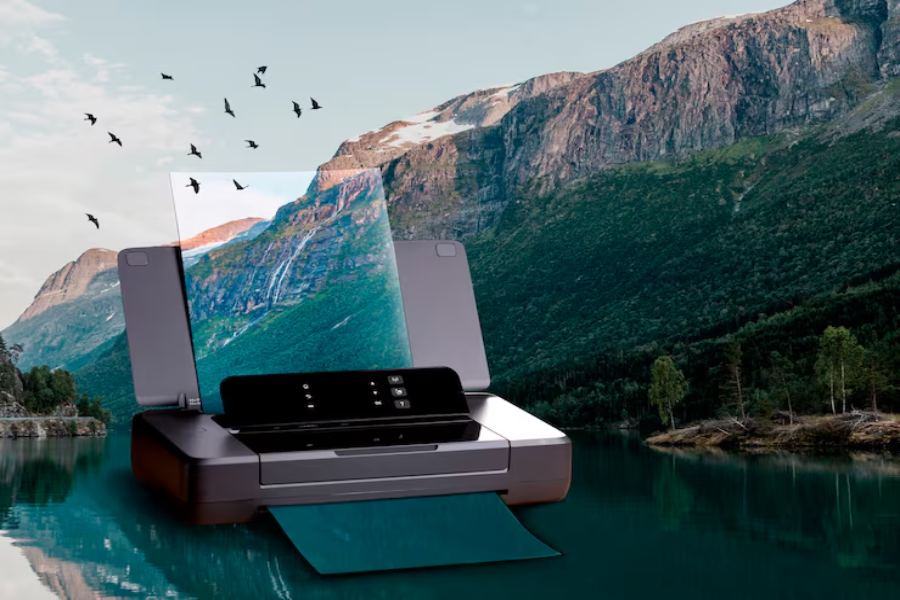You wake up in the morning, open your inbox, and it’s overflowing. Ads, newsletters, reminders. You don’t even read half of them before deleting. Scroll your feed and it’s more of the same, offers sliding by, videos autoplaying, banners stacked on banners. It all blends into one long blur.
Now think about the last time you received something printed. Maybe a catalog in the mail. Maybe packaging that was clearly designed with care. Or maybe a piece of branded swag at an event. Chances are, you noticed it more. You might even still have it lying around somewhere.
That’s the interesting part. In a world drowning in digital messages, print hasn’t died. It hasn’t even really slowed down. It’s just changed shape. The companies that use it well aren’t doing so out of habit but because it still works, often in ways digital can’t touch.
Print’s strange resilience
It’s easy to assume print is old-fashioned. Screens are everywhere, after all. We work on them, shop on them, even relax on them. But print has a quality no screen can match: it’s physical.
When you pick up a well-designed business card or flip through a printed booklet, you’re engaging more than just your eyes. There’s weight, texture, maybe even smell. It feels like it exists in the real world, which means your brain processes it differently. It sticks.
And then there’s the trust factor. Printed material often feels more official. Anyone can spin up a website overnight. A printed report or branded book suggests investment and seriousness. It says, “We cared enough to make this permanent.” That perception hasn’t gone away, even in 2025.
Finally, there’s the issue of competition. Digital is crowded to the point of exhaustion. Every app, every platform, every inbox is shouting for your attention at the same time. Print doesn’t have to fight like that. A brochure on your desk or a postcard in your hand is by itself at that moment. No flashing banners next to it. No pop-ups trying to steal attention.
That’s why some of the most digital-native companies in the world still turn to print for key moments. Apple, Google, and Amazon all use packaging, signage, printed reports, or mailers. Not because they’re sentimental. Because it works.
The branding side of things
Every serious brand knows consistency is everything. Logos, colors, and typefaces all need to line up across every touchpoint. Print is part of that ecosystem.
A crisp business card. Packaging that feels considered. Event signage that sets the tone before anyone even speaks. These are small but powerful reminders that a brand isn’t just a logo.
Conferences are a good example. People walk through halls lined with booths, all competing for attention. The companies that hand you something memorable, something worth holding on to, tend to stick in your mind longer. If all they do is send a follow-up email, they’re gone the second you delete it.
Print also hangs around in a way digital doesn’t. A flyer can sit on a desk for weeks. A branded folder might get tucked onto a shelf and rediscovered later. The staying power is built in.
But where print is really getting interesting is in the creative ways businesses are pushing past the standard flyers and brochures.
More than paper handouts
The old print formula was predictable: brochures, flyers, posters. All useful, but all limited. What’s happening now is far more imaginative.
Brands are experimenting with interactive catalogs linked to digital content. They’re handing out posters and stickers people actually want to keep. They’re using print to surprise, not just inform.
One of the more unusual but effective examples? Custom playing cards.
It sounds quirky at first—why would a business spend money printing customized decks of playing cards? But the logic is solid. Unlike a brochure that gets skimmed and tossed, cards get played with. They sit in a drawer, come out at parties, and get shuffled again and again. Every time they’re used, the brand is quietly present.
Startups have included them in investor kits as conversation starters. Retailers have gamified loyalty programs by encouraging customers to collect branded decks. Inside companies, HR teams use them for onboarding games or team-building activities.
The appeal is simple: cards last. They entertain. They get shared. And because they’re not something people expect, they leave an impression.
This is print’s edge in the digital-first era. Not as static information, but as something interactive. Something with life beyond the initial handoff.
When print and digital link arms
Print doesn’t need to live on its own. Some of the smartest campaigns today connect the physical with the digital.
QR codes have made a comeback for exactly this reason. They turn a postcard or a catalog into a gateway. Scan it and suddenly you’re on a personalized website, watching a video, or unlocking a discount. The paper leads you to the pixels.
Other tech, like NFC tags or augmented reality overlays, does the same thing. The physical item becomes a doorway into a deeper digital experience.
This hybrid model is powerful because it avoids the “either/or” mindset. Print isn’t trying to beat digital, and digital isn’t trying to replace print. They complement each other. One grounds the experience in reality, the other extends it into endless possibilities.
Technology and responsibility
It’s worth noting that printing itself has moved forward. We’re no longer in an era where companies had to order thousands of copies to make costs reasonable. Digital presses allow for short runs, personalization, and rapid turnaround. A business can test an idea, print fifty versions, adjust, and then scale up if it works. That flexibility opens doors to more experimentation.
And then there’s sustainability. Consumers are paying attention to how things are made. Companies are responding with recycled paper, eco-friendly inks, and carbon-neutral processes. Printing responsibly has shifted from “nice to have” to “expected.” Choosing the greener option is as much a brand statement as it is an operational decision.
The point is, print is adapting. It’s not stuck in the past. It’s figuring out how to meet today’s expectations.
So where does this leave us?
Print isn’t going anywhere. It’s just not the same print we grew up with. It’s leaner, smarter, more creative. It knows what digital can’t do and leans into that.
Its power is in being real. In an age when everything is pixels, a physical item still surprises. It feels credible. It feels lasting. And when used creatively, whether through an immersive catalog, an interactive mailer, or a deck of custom playing cards, it becomes more than information. It becomes an experience.
Businesses that dismiss print as outdated miss the point. This isn’t about clinging to tradition. It’s about using every channel available to connect with people in meaningful ways. Digital covers speed and scale. Print covers depth and memory. Put them together and you’ve got something strong.
At the end of the day, people remember what they touch, what they keep, and what they use. That’s where print still wins. And in a digital-first world, that kind of edge is exactly why it survives.







